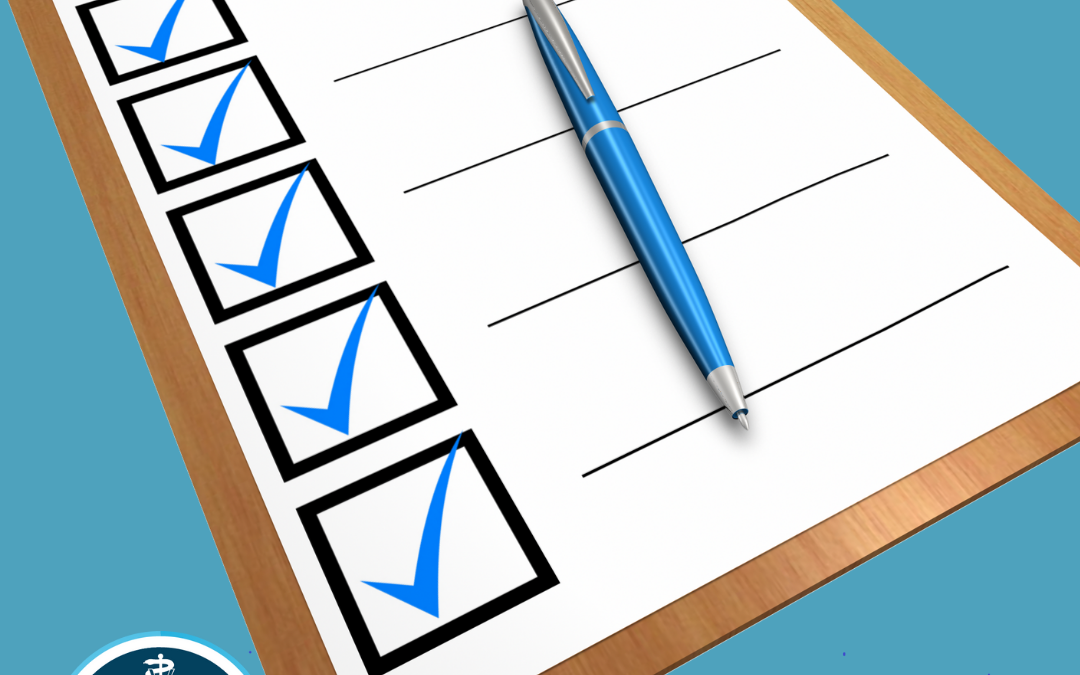Why Should You Have a Surgical Checklist?
There are many reasons why a pre and post-surgical checklist should be the first and last thing that you look at when you have a surgical procedure in your hospital. According to dvm360, there have been studies that show fewer complications post-surgery if you have a checklist to go through. So, why should you have a surgical checklist?
What to include on your checklist
The checklist can include a variety of different things. It can be tailored to match what your clinic does both before and after surgery. We have included an example of a checklist that our veterinary advisor uses for every surgical procedure in his clinic. On this checklist, you will find that there are three different columns. Some of the items show up in multiple columns for a variety of reasons. Some information should be included in different places.
The first column includes everything that their clinic does before anesthesia. This ranges from the resurrection code, and pre-operative photos of the animal to the use of antibiotics. Whether your hospital does all of these steps OR has more than they do having it on a sheet of paper or tablet that you can go through before every surgery can lead to fewer complications after surgery.
The second column is a list of what to check off pre-operation. This portion of the list may include the site location. It may also include the antibiotics box that was checked in the first column, was it administered. There also could be a few other things included in this section that are specific to the practice that you work in.
The third column is for the post-operation portion of the checklist. While the surgery is completed, as veterinary professionals know, the care for the animal is not over. This portion of the checklist can include sponge count if there are cultures and additional biopsies taken.
Other Aspects of the Checklist
It may be helpful to include a place for a person to sign off on the checklist. If you have any questions about what is complete on the list, you can ask the veterinary professional that was signing off on the checklist. It may also be beneficial to include a place for additional notes, so if there were any equipment issues, concerns about the patient that wasn’t involved with the surgery.
Benefits of the checklist
There are many benefits to having a pre and post-operation checklist. They can serve multiple purposes for the clinic. If a client is very protective and active with their pet’s surgery, the list can show proof of the steps taken.
It also could improve the efficiency of the practice that you work in. While not all aspects of surgery or things in the veterinary clinic can be controlled, some things could help improve efficiency. Our blog, “Efficiency in the Clinic – Under Your Control” covers a variety of different things that you can control in the hospital to improve efficiency. Having improved efficiency also means that there are things that can be made easier for training new staff. Some clinics train new workers frequently. This checklist can make it easier for the new employees to know what happens during surgery, and they can physically see what needs to happen.
Complications During Post-Operations
Like anything, some complications can happen when one of our canine companions undergo surgery. We know that post-surgery is where most of the complications can arise. MeasureON! is a tool designed to help with that along with having a post-operative checklist. Our blog, What to Know Post-Operation, covers essential information to know about your patient if they were to come to your hospital for surgery. This also can serve as information that is on a surgical checklist.
When the VetMeasure Team asked our Veterinary Advisor, Dr. Steve Garnett, why he thought a surgical checklist benefits the veterinary hospital he stated the following.
“Surgical checklists have been shown to improve patient morbidity and mortality in both human and veterinary medicine. The use of checklists provides an added layer of protection against preventable complications, especially in busy small animal hospitals. Charleston Veterinary Referral Center employs a series of pre-, intra-, and post-operative checklists for every case undergoing a procedure. Not only have they improved patient care, but the checklists also allow the surgery service to move more efficiently as it streamlines communication between technicians and surgeons. The checklists are modified periodically to meet the needs of an ever-evolving service.”
So Why Should Your Hospital Have a Surgical Checklist?
There are many reasons why a pre and post-surgical checklist should be the first and last thing that you look at when you have a surgical procedure in our hospital. The checklist can include a variety of different things. It can tailor to match what your clinic does both before and after surgery. There are also many benefits to having a checklist in your hospital.

